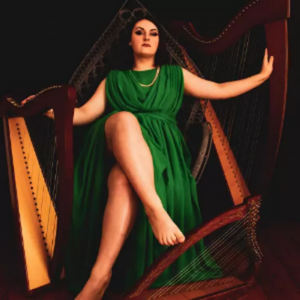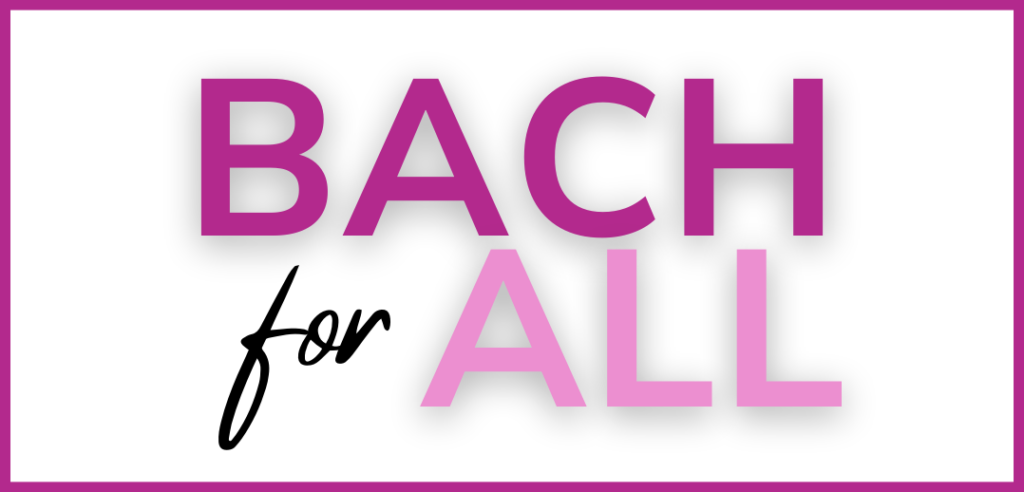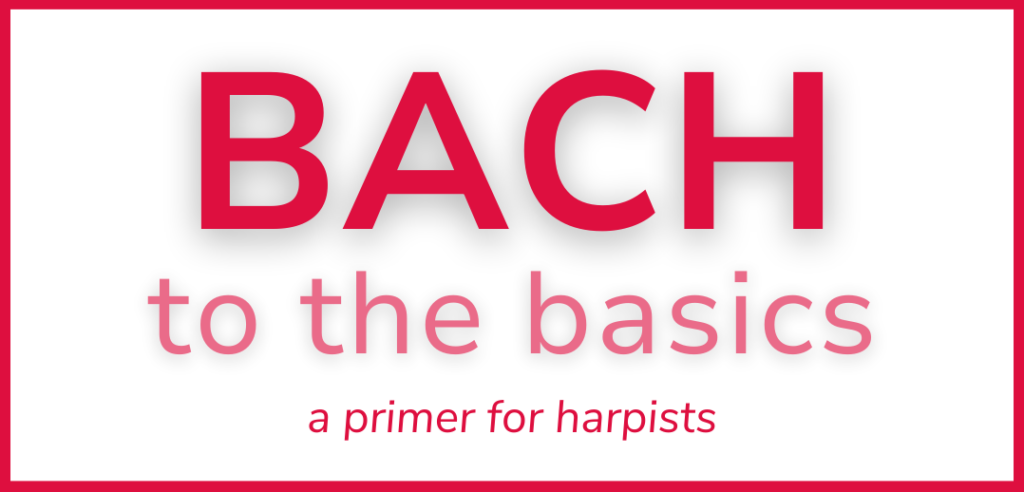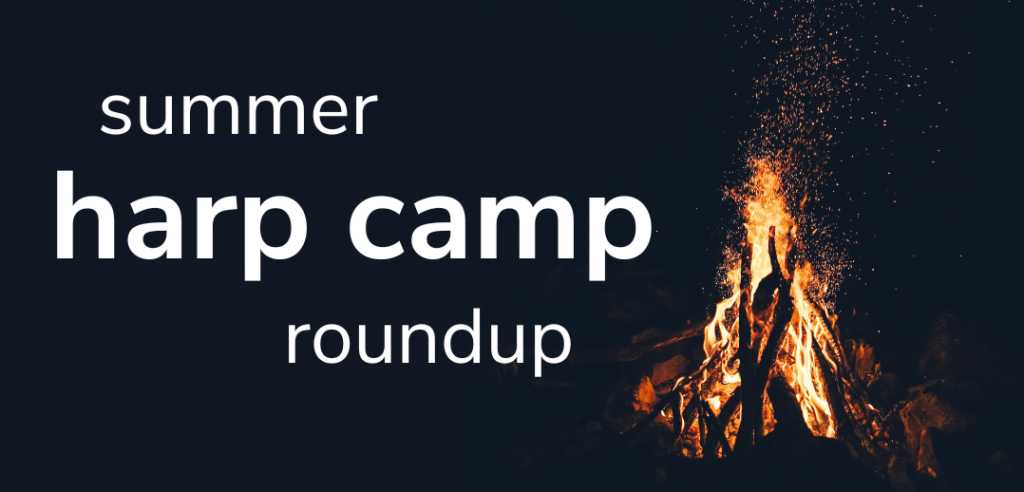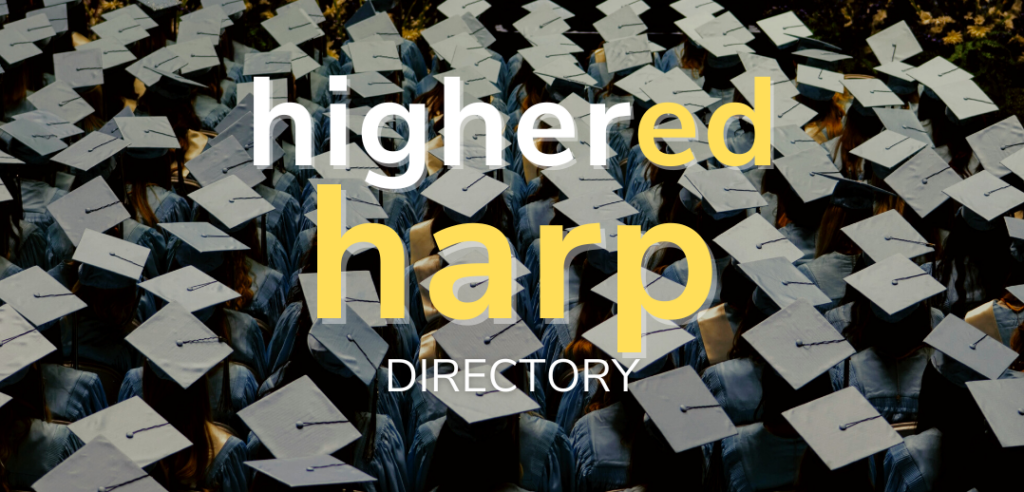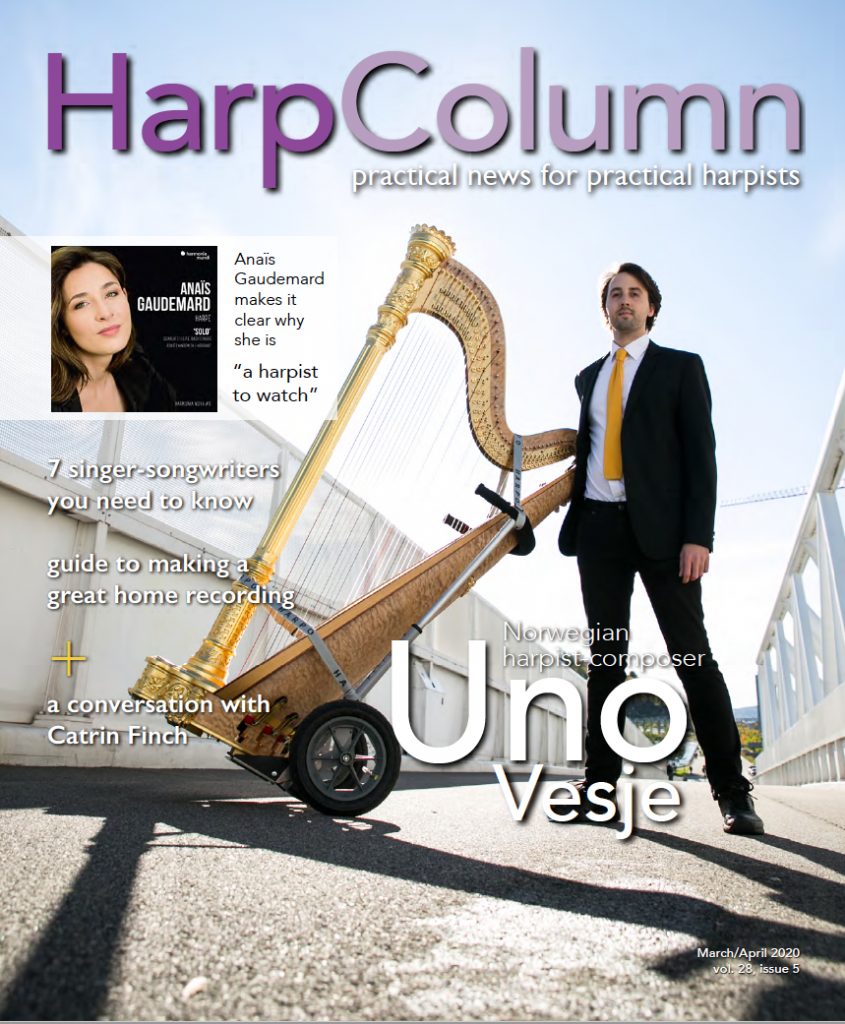
the craft.”
—Sam Hickman @samhickmanmusic
When I was little my whole family played ice hockey. It was the ’90s, and in Texas, for some reason, ice hockey was the thing. If you’ve ever been ice skating, you’ll know that, for some people, just staying upright is difficult. If you’ve ever played field hockey, you’ll know that the level of hand-eye coordination needed is high. Now combine the two, put yourself in front of a large audience, and you will understand what it’s like being a singing harpist. Playing the harp while singing is a combination of two highly skilled disciplines, and both require a lot of talent, passion, and dedication to the craft. If you take your eye off the puck for one second, you’ll suddenly be belting “And the Star Wars keep singing like they know the score,” as the dramatic climax for Eva Casidy’s “Songbird.” It’s a lot to think about.
For most harpists, the idea of singing at the harp can seem like an impossible task. The hand-eye-mouth coordination required is enough to stump most. Add to that the level of core strength needed to happily belt a high E while playing a jazzy rift underneath, and it becomes a feat of uncommon physical strength and coordination. You’re holding a huge instrument on your torso while also trying to keep your breath even—it’s a tricky business! But for a lucky few, this combination of skills seems to come naturally.
There are a few well-known crooning harpists—indie sensation Joanna Newsom, the multi-talented Erin Hill, Celtic folk musician Maeve Gilchrist, and the venerable Deborah Henson-Conant—all of whose stories have been told before in Harp Column. So for this feature, I profile six of my favorite (though perhaps lesser known) singing harpists to showcase the range of talent and styles out there. From some well-established musicians to some wonderful emerging talent, these multi-dimensional harpists are worth a listen and a watch.
Judith Ude

—Judith Ude @judithude
Judith Ude is a UK-based harpist and singer. Like me, she is mostly self-taught. Ude grew up singing and writing songs. She made her public singing debut when she was just 7 years old. Ude bounced around musically, picking up various instruments over the years before she finally invested in a small lever harp. “For a short while, I took lessons with Eleanor Hudson of the Liverpool Philharmonic Orchestra,” Ude says. “When I was no longer able to afford lessons, I had to get creative. I began to teach myself using books and my own understanding of how the harp could be used. It soon became my primary instrument for writing songs, and eventually performing them too.”
Ude isn’t alone in her struggle to afford a formal musical education. It is an issue most of the harpists I spoke to for this article mentioned. Access to education is a barrier for many aspiring harpists, and an issue that is rarely spoken about. Still, Ude is an example of talent and smarts winning out. A strong talent, understanding of your skills, and determination can still manage to get you where you need to go.
Listening to Ude’s music, her influences are very clear. “My African heritage and my faith give me flavor and influence my musical style,” she says. There is such a strong sense of identity in her music, her vocals are stunning, and each piece is well-constructed and produced. She is a singing harpist for the modern world. Like a lot of harpists, she uses technology to layer and create. “As I sit with my harp, I start to sing and play what I hear in my head. These turn into lyrics, verses, phrases, and a song is birthed.” Ude describes “having an orchestra in [her] head,” as orchestrations and instrumental ideas come naturally when she is working out a piece, looping her musical ideas.
Her modern and non-traditional way of playing the harp allows Ude to perform alongside other musical acts without hesitation. “The best show I have ever played was Latitude Festival on the BBC Introducing Stage,” Ude recalls. “It was a wonderful gig that showed me, if nothing else, that the harp is an instrument that can hold its own center stage, as well as in the background. It definitely has a place in chart music. It has a beautiful, heavenly sound that more people need to hear. The audience at the festival was captivated and listened to every note I played.”
Ude is a refreshing talent to see in the harp world. Her goal to perform on Later with Jools Holland will no doubt be met in the coming years as she continues to create such extraordinary work.
Tara Minton

—Tara Minton @taraminton
I had the pleasure of hearing Tara Minton perform at the Camac Harps Wales Weekend in 2017, fresh off the release of her debut album The Tides of Love, and let me tell you—she is a belter! It was during this concert that Minton got to perform with one of her major musical influences, Jakez François. Minton says seeing François playing jazz harp with Cindy Horstman on YouTube completely changed the direction of her life.
Minton has a degree in musical theatre from the University of Ballarat (Australia), a diploma in classical piano and master’s degrees in jazz voice and harp from the Guildhall School of Music and Drama in London, so she’s clearly got chops. More importantly, she has a jazz trio that is as tight as anything.
Her influences are very clear in her writing and performing, from classics like Joni Mitchell and Ella Fitzgerald to Esperanza Spalding, who Minton hopes to tour with one day.
When it comes to her writing process, Minton says the foundation changes. “Sometimes it’s lyrics first, sometimes a melody, sometimes a harmonic progression or motif sparks an idea,” she says. “I often write at the piano so that I’m not limited harmonically. I can always ‘harpify’ it later.” Minton goes on to say she has even started to step away from an instrument altogether when composing. “Often my hands fall into familiar patterns, which gets in the way of my creativity. Taking the hands away solves that problem.”
This is such a common feeling for harpists—I frequently fall into this trap myself. When you do jazz and pop music arranging, it’s easy to let your hands land in certain well-worn patterns.
Minton is a fabulous live performer with great control and a calming stage persona, which, I gather, she gained from playing open mics and free public gigs three or more times a week when she was starting out. “You just have to be willing to drag the harp out for a 20-minute set in the back room of a pub and trust that you’re learning valuable performance skills, working on your material and stage craft.” Minton says her approach to getting work has changed as she has gained experience in the field. She works directly with jazz venues and promoters to book gigs, relying on relationships she has built over her nine years in London.
Fostering relationships with fellow musicians is just as important to her success, Minton says. “I think playing with other musicians, attending other people’s gigs, and building a community are really important. All these connections are super valuable.”
Esther Swift

—Esther Swift @estherswiftmusic
Scottish musician Esther Swift learned how to sing and play at a young age from Charlotte Peterson, Savourna Steverson, and Isabel Meiras. She performs folk music as well as original tunes. She is deeply influenced by both her affinity for playing by ear and her love of and training in classical music, having studied at the Royal Northern College of Music in Manchester.
Swift says she likes to think in terms of chords when she’s writing a song. “I always find a chord sequence that I like first, and then the tune comes after,” she says. “I also love thinking about riffs in my right hand that go in different timings to my left hand, to make things sound fuller and varied.”
Like other singing harpists I talked to, Swift values community and collaborations with other musicians. She performs with fiddler Catriona Price as the duo Twelfth Day. Their music has a modern folk feel to it. Their lyrics often touch on contemporary issues, and their often unison singing gives an interesting texture to their recordings. Swift also plays with the harp quartet Clouds. “I find my best opportunities come out of creative projects that are often one-offs,” she says. “I also love playing with other people and will only really play solo if it’s a really nice festival or tour where I know there will be a great sound and banter.”
Swift says her goals and dreams include getting regular commissions and creative projects in both performing and composing. She is also passionate about music education and wants to work to make better creative workshops. Perhaps most important is her passion for working with different musicians from around the world who inspire her. “Some of my very favorite life experiences have been working in other countries with folk musicians from completely different traditions than mine.”
Anna Jalkéus

—Anna Jalkéus @nakedharpist
My favorite part of these profiles has been getting the scoop on some of my favorite harpists. If you’re a singing harpist, you will have no doubt heard Anna Jalkéus’ music. From her concerto to her new album Estrogenia (reviewed in the September/October 2019 issue of Harp Column), her unique style and vocal timbre make her easily recognizable. Jalkéus grew up in a musical family. Her parents were founding members of the Swedish a cappella group The Real Group. If you don’t know what The Real Group is, think Manhattan transfer meets the Swindle Singers. They have such a tight, unique sound, you can hear its influence in Jalkéus’ work.
Like many singing harpists, Jalkéus says her main influence is…you guessed it—Joanna Newsom. “When I first heard ‘Sprout and the Bean’ and ‘Bridges and Balloons,’ I immediately wanted to sit down and try to play them on my mom’s harp.” Jalkéus says her mom had been singing and playing for years, and so she always thought of that as her mom’s thing, but this was different. “As a young, hard-working musician, it was very liberating to do something I really didn’t know how to do but that just felt and sounded magical right away.”
Jalkéus’ says most of her writing inspiration comes while “jamming around” on the harp before or after practice and recording the ideas on her phone. She has found a great deal of success and has cultivated a loyal following as a singing harpist, but it didn’t just magically happen. “When I just started out doing singer-songwriter stuff, I would book gigs at venues like bars or listening rooms in town, and get my friends to come out. I wish I could say that part of the admin work is different now—I’m still sending emails!” Her advice for others is pretty simple. “I think you just gotta do it and not be afraid of being rejected. Spoiler alert: you will be, and it doesn’t mean you’re bad.” Jalkéus admits finding your space can be tricky. “Figure out where other singer-songwriters play. If you have a band, figure out which genre is closest to what you do, and then find out where other bands in that genre perform. Get a picture taken, and write a killer text about the music you play. And then invite all of your friends!”
Rashida Jolley, a.k.a. “Tulani”

—Rashida Jolley, aka Tulani @iamtulani
This powerhouse needs no introduction for most harpists, but if you are unfamiliar with the incredible talent that is Tulani, here is a taste. Coming from a musical family, Rashida Jolley started playing harp and singing solos in her church choir at a young age. She studied harp at the Washington, D.C. Youth Orchestra. Her music is a beautiful marriage of her many musical influences—funk, R&B, classical, and soul. There’s everything from Prince and James Brown to Harpo Marx and Carlos Salzedo in her sound. Jolley performs under the stage name Tulani. Because she can successfully blend these styles and genres, Tulani is able to take her music to new audiences. “I performed at a heavy metal club in San Antonio, Texas, and it was the first time they had ever had an R&B act at the club,” she says. “Prior to me they had only had heavy metal acts. I was nervous about how I would be received. After the performance, it touched my heart when people came up to me and said they don’t listen to R&B, but that they really enjoyed the show. I learned how valuable it is to always be true to yourself and not be afraid to push the boundaries of your comfort zone.”
If you have ever seen a video of her performing or been lucky enough to catch her live, you no doubt have seen her infectious passion. One of the most astounding things about Tulani is how effortless her voice sounds when she’s performing. As most harpists know, singing while playing the harp is not easy, and somehow this fabulous artist makes it sound so natural and gorgeous.
Tulani says songwriting is therapeutic for her. “It’s a blank canvas to express a range of emotions, from struggles to good times, heartbreak to love, or the ups and downs of life. Not all my songs are from personal experience, but I will definitely write about something that I’m going through or went through. For me, writing is about digging deep down into my soul, and tapping into an emotion that I hope connects and speaks to people.”
Lyrika Holmes

—Lyrika Holmes @lyrikaholmes
From running her non-profit Artz for the Harp, to working with producers, to teaching to creating music, Atlanta-based singing harpist Lyrika Holmes is an example of someone who is booked and busy—definitely something to aspire to in the harp world.
She grew up playing and singing separately until her teacher Maria Pinckney showed her how to play Michael Jackson’s “Beat It” on the harp. “After that my world opened up,” Holmes recalls. But it wasn’t until she was introduced to the work of Deborah Henson-Conant and she heard music by Andreas Vollenweider and Alice Coltrane that she realized she could combine her love of jazz, hip-hop, or any genre with the harp.
Holmes says her creative process varies, depending on what the project requires of her. “I work with a lot of hip-hop producers who will send me something to vibe to. I listen to it, analyze it, and go from there. I like to play first to see what I want to add, then later notate it, or add lyrics. We feed off each other’s ideas.”
When she is writing her own material, the process is different. “I start off with, of course, a drum track that inspires me. I love minor keys, and I’ll play various quarter progressions until I find the one that sticks. Then I start to write my lyrics, and I lay down the tracks.”
Holmes’ non-profit is also a big part of her career. “I started Artz for the Harp because if I hadn’t been exposed to the harp growing up, my life would have chosen a very different path. I believe the arts should be accessible to everyone regardless of income. So my non-profit takes harps on the road to various after-school programs and senior centers.” Homes says she’s excited about the partnerships she is working on. “Our goal in the next five years is to have multiple district-wide programs throughout Georgia for youth and music enrichment and therapy in a variety of senior facilities. Nothing makes me happier than seeing students that I worked with 10 years ago tell me it kept them off the street and out of trouble.”
Ahya Simone

—Ahya Simone @ahyasimone
Ahya Simone is definitely the one to watch. She is a fabulous up-and-comer, making waves in the harp world and pushing the boundaries further than ever before.
Simone began as a vocalist and was initially quite reluctant to take up the harp.
“I was always a singer. I would always hum around as a kid. I grew up singing in the black church with the youth choirs and even some community choirs.” Simone says she actually had no intentions of being a harpist—she wanted to be an opera singer. Harp class was an elective offered at her high school—Cass Tech in Detroit, Mich.—and Simone found it on her schedule the first day of her second semester. “I immediately protested and tried to get it removed, yet my counselor didn’t budge. I was stuck playing harp for a semester…and I haven’t put it down since,” Simone says. “Once I entered college, it was too hard to juggle voice and harp, so I focused on harp performance. After graduation, I decided to merge my two loves, and the rest is history.”
Simone cites another singing harpist in this article as being her biggest source of inspiration—Rashida Jolley. “I remember Rashida Jolley, a black woman, harpist, and singer, performing on America’s Got Talent. She Sang Lauryn Hill’s ‘Killing me Softly,’ and it totally blew my mind! Another black woman harpist, singing and playing R&B? What?! I could sing and play too!” Simone says it took at least three years for her to feel comfortable enough to perform publicly.
Simone is a prolific live performer, from her overseas performances with Juliana Huxtable to her work outside of the classical context, she performs in all sorts of environments—art events, film, club, and nightlife. From her collaboration with electro-pop musician Kelela to new age musician Blair French, she really demonstrates how versatile the harp is.
Simone is also a strong songwriter. She says her process goes most smoothly when she leads with the harp and builds from there. “Sometimes I write short poems or melodies pop up in my head. I tend to let my initial thought guide me to my next step.” Her music is very reflective of her influences and upbringing, often using soaring vocals over a simple and effective harp riff. •







